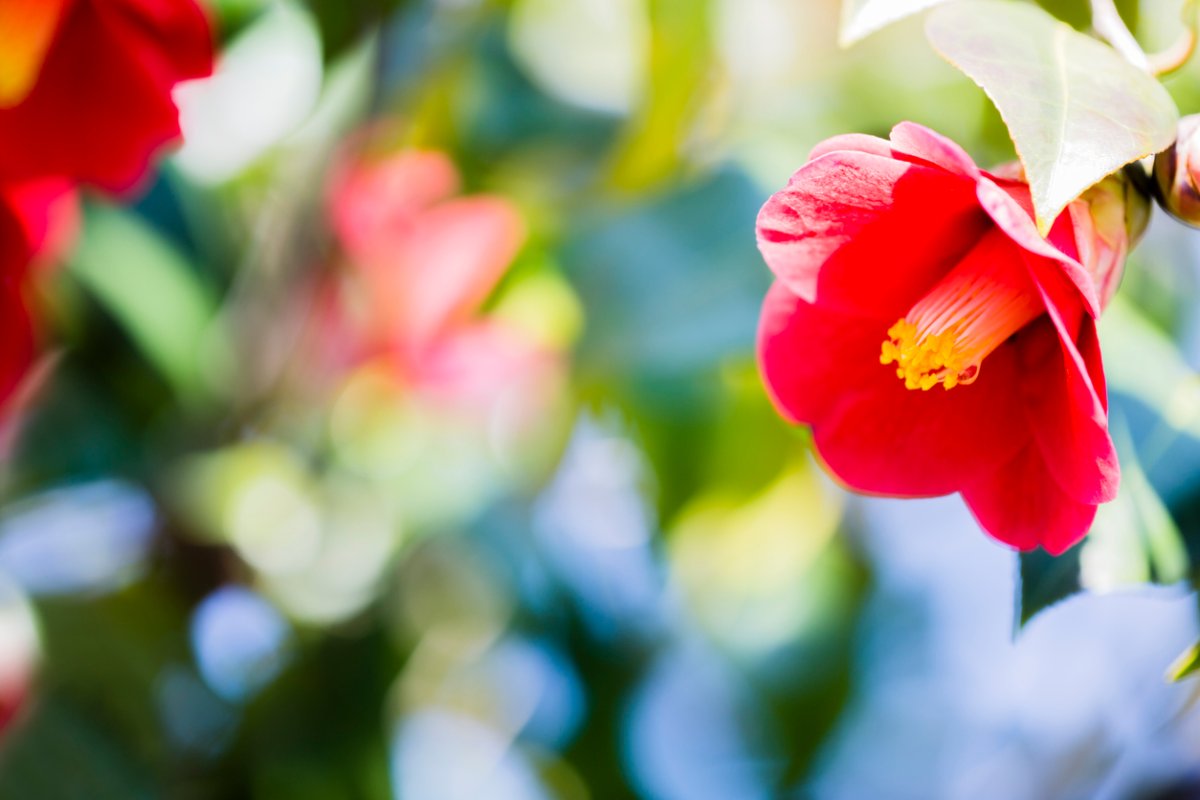

We may earn revenue from the products available on this page and participate in affiliate programs. Learn More ›
The color red, often associated with love, glory, and power, grabs attention. So red shrubs are a must-have when you want a garden that stands out from others.
Of course, that can include a bush with red flowers, red “wood,” or red foliage, or even bushes that turn red in fall. It may also include a tree with red leaves, since some shrubs—such as camellias—can be pruned into a single-trunk, tree-like shape.
1. Azalea (Azalea spp.)
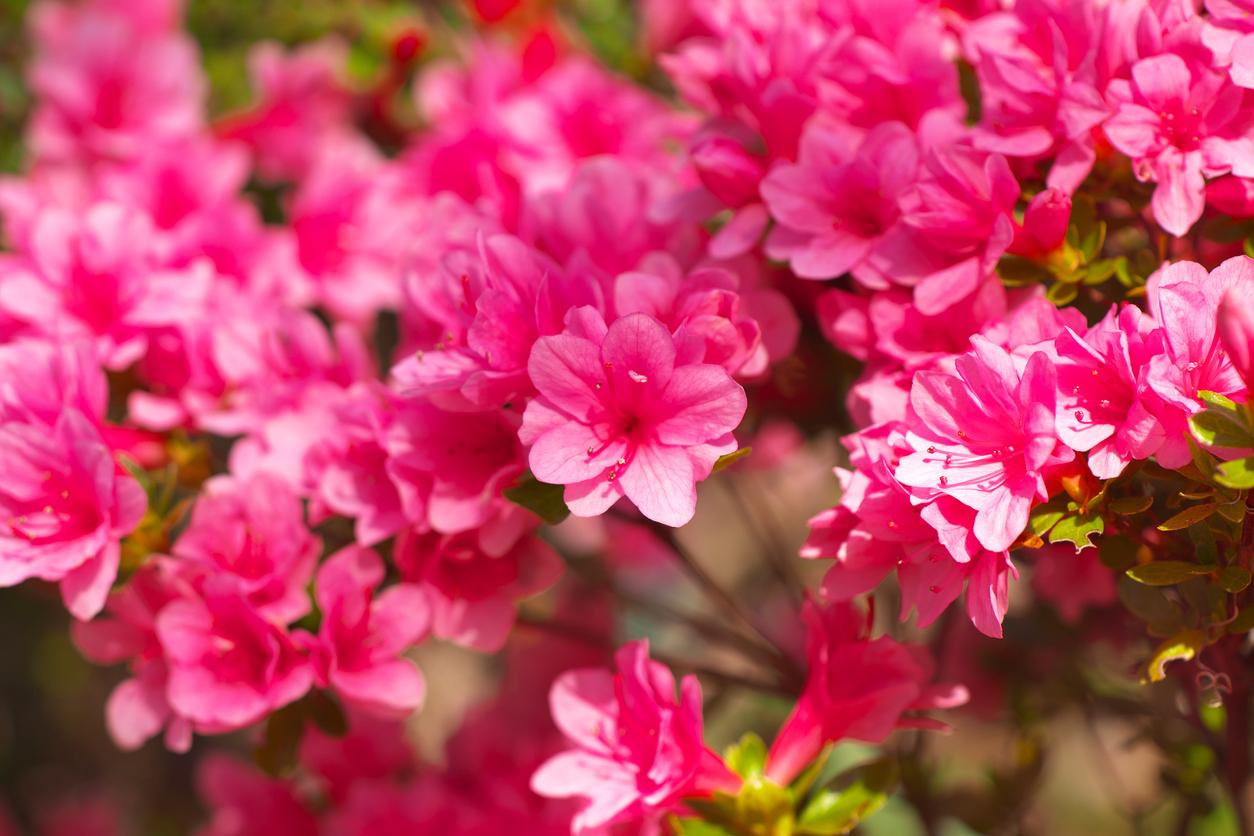
Azaleas like the evergreen Red Formosa provide a flamingly warm welcome to spring. But reblooming types, including the hardier evergreen Autumn Ruby that grows to only 2½ feet, can continue flowering off and on all summer into fall, ranking them among the best shrubs for the front of the house. Most of these red bushes prefer partial shade or only filtered sun and constantly damp but fast-draining acidic soil.
USDA Plant Hardiness Zones: varies from 6 to 11
Best For: Foundation planting, specimen plant, shade garden
2. Baja Fairy Duster (Calliandra californica)
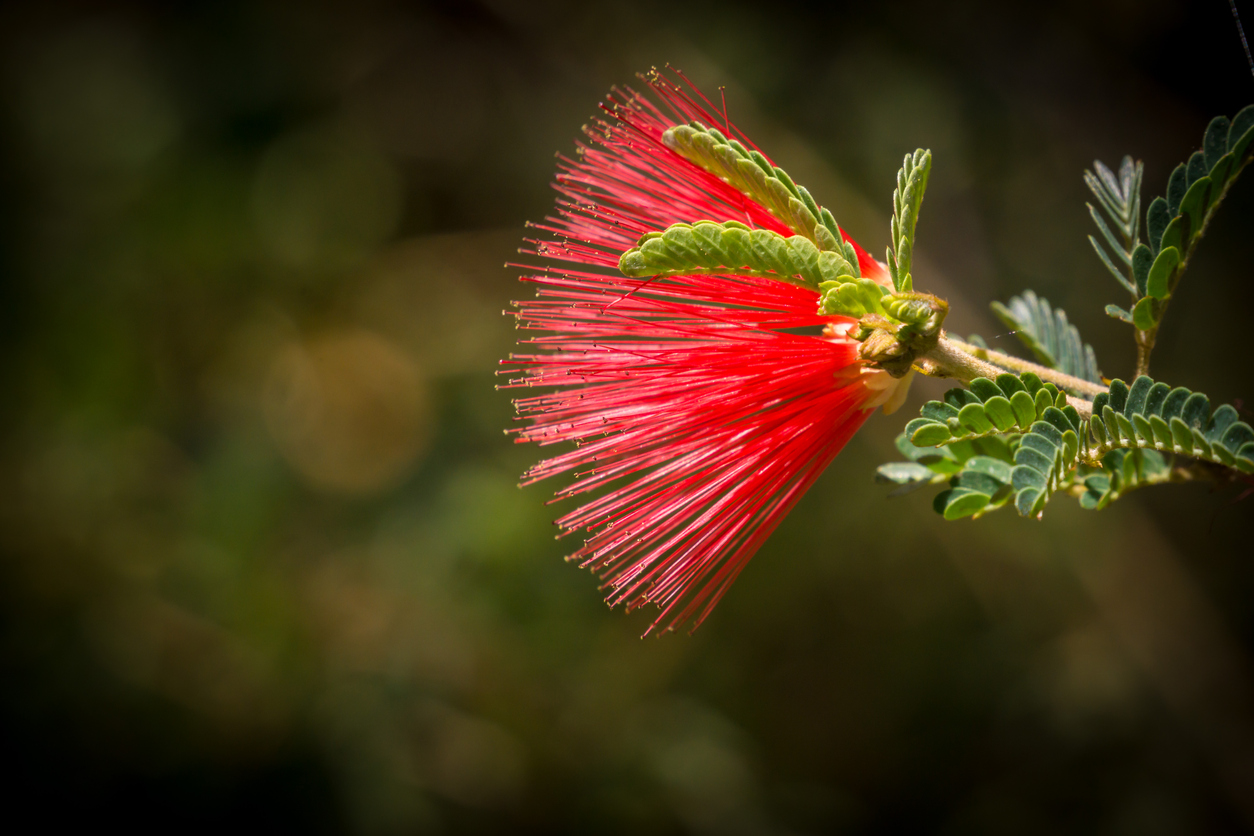
This California native grows to 5 or 6 feet with ferny foliage and flowers that resemble powder puffs or feather dusters. The red bush leaves its competition in the dust as far as drought tolerance goes, requiring very little water but plenty of sun to produce its bright blooms year round in zones 12 and 13, and during the warmest months in zones 9 through 11.
USDA Plant Hardiness Zones: 9 to 13
Best For: Desert garden, pollinator garden, xeriscaping
3. Flowering Quince (Chaenomeles speciosa)
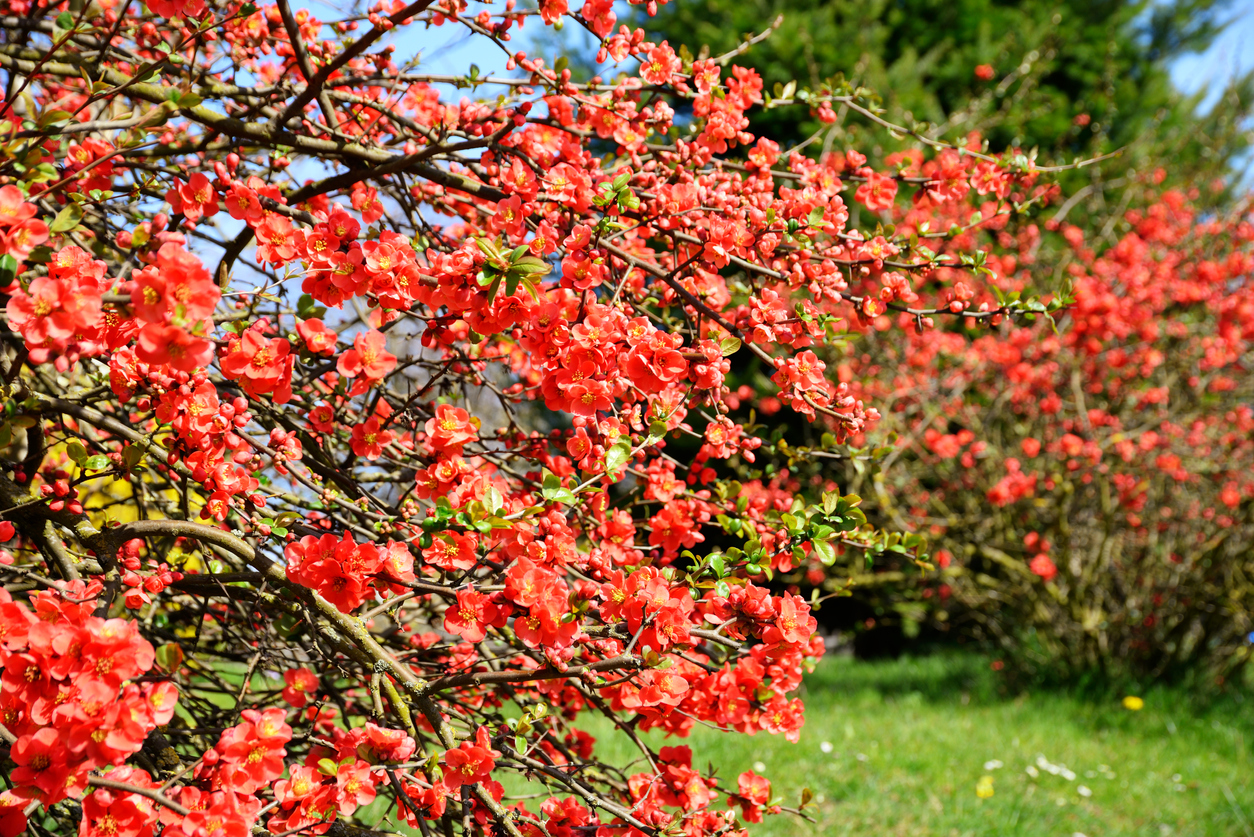
Also known as fire bush and varying in height from 3 to 10 feet, this sun-loving rose relative fires up spring with 1- to 3-inch blooms that appear before its foliage. In some cultivars, those single, semi double, or double flowers can be pink or white, but the red ones make a striking contrast to the pastel hues of many other spring flowers. The thorny shrub’s glossy leaves are also red tinged when they finally appear, turning to dark green later, and it produces small, bitter fruits sometimes used in jams and jellies.
USDA Plant Hardiness Zones: 4 to 10
Best For: barrier, edible garden, hedge
4. Japanese Camellia (Camellia japonica)

Like the fire bush, this shrub can produce pink or white blooms on a glossy-leaved shrub. However, the Japanese camellia looks most fiery and flamenco-ready when dressed in ruffly red in single cultivars such as Korean Fire, semidouble cultivars such as Bob Hope, and double cultivars such as Kramer’s Supreme. In general, camellias prefer partial shade and mildly acidic soil. They typically bloom in the cooler months of autumn, winter, or spring.
USDA Plant Hardiness Zones: 7 to 10
Best For: Asian garden, border, small tree
RELATED: 16 Colorful Shrubs for a Standout Winter Garden
5. Crimson Bottlebrush (Melaleuca citrina)
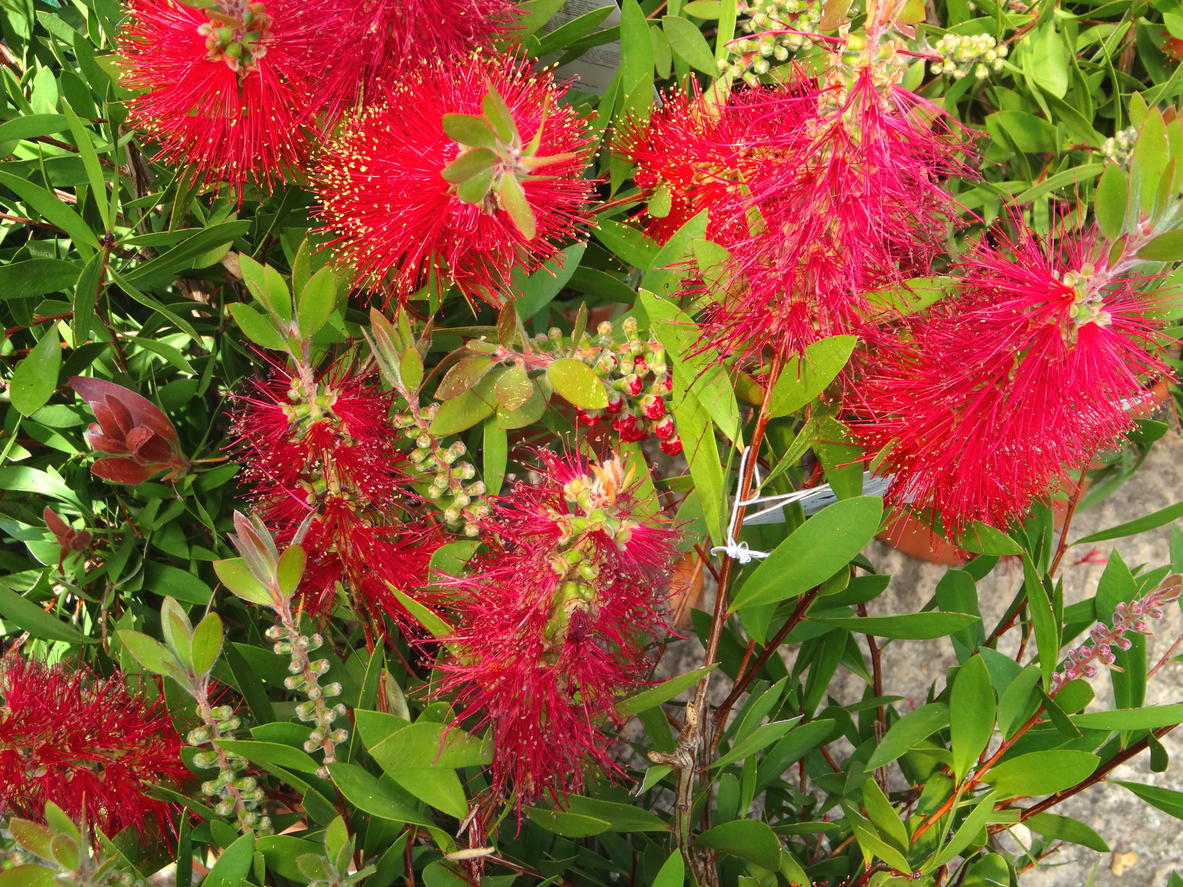
Like the aforementioned Baja fairy duster, crimson (or lemon) bottlebrush isn’t likely to give you the brushoff since it also tolerates less than ideal conditions. Formerly known as Callistemon citrinus, the shrub has red flowers that assume a 6-inch bottlebrush shape and appear in flushes all year long in frost-free growing zones. This red flower bush typically tops out at about 15 feet with narrow lemon-scented leaves but can be pruned into a small tree for the front yard. It requires full sun and moderate water.
USDA Plant Hardiness Zones: 8 to 11
Best For: Espalier, hedge, small tree
6. New Zealand Tea Tree (Leptospermum scoparium)
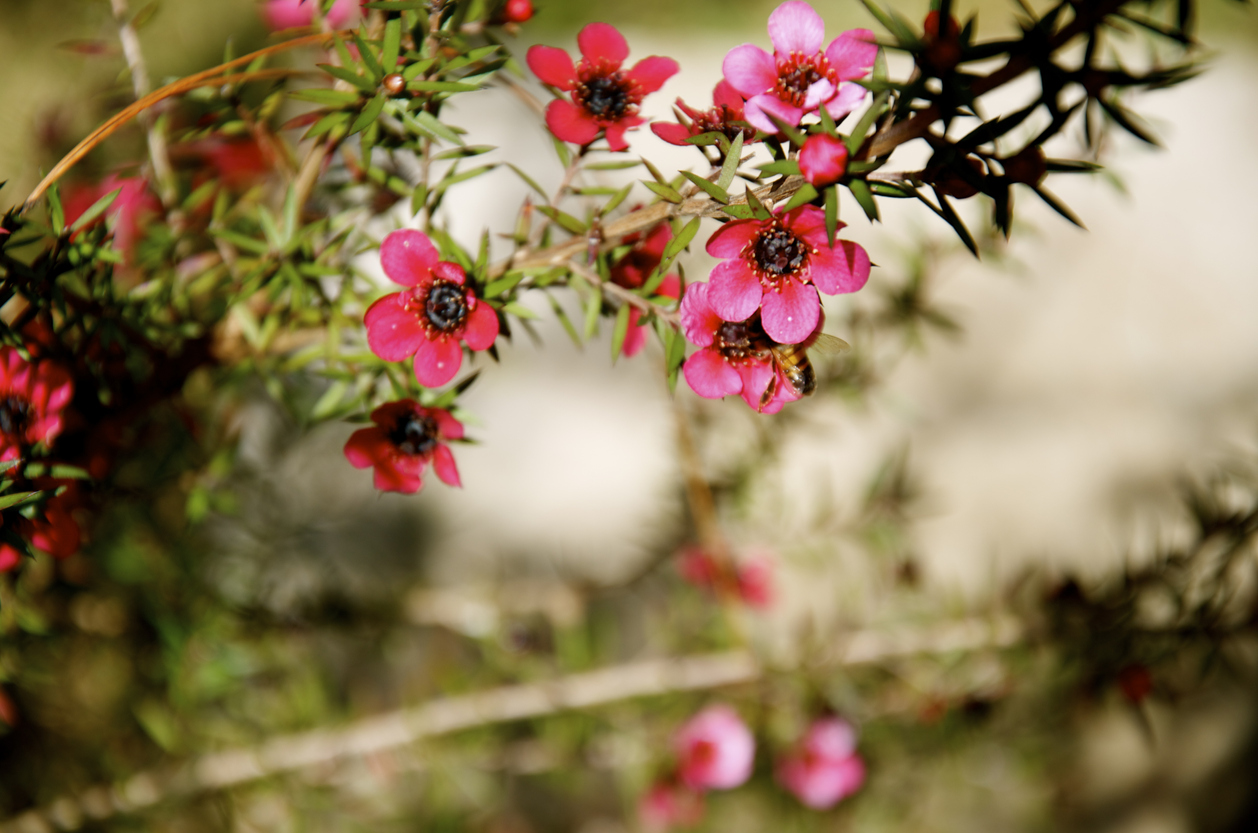
Also called manuka, this drought-tolerant, sun-loving shrub with needle-like foliage varies from 1 to 10 feet in height, according to cultivar, and produces ½-inch flowers resembling those of wild roses during spring and summer. Red cultivars include Crimson Glory and Ruby Glow, both with double blooms. And, yes, you can brew tea from the leaves, but it reportedly has a bitter flavor.
USDA Plant Hardiness Zones: 9 to 11
Best For: Container plant, pollinator garden, tea garden
RELATED: 6 Types of Maple Trees You Might Find on Your Property (Including One You Definitely Don’t Want)
7. Redtwig Dogwood (Cornus sericea)
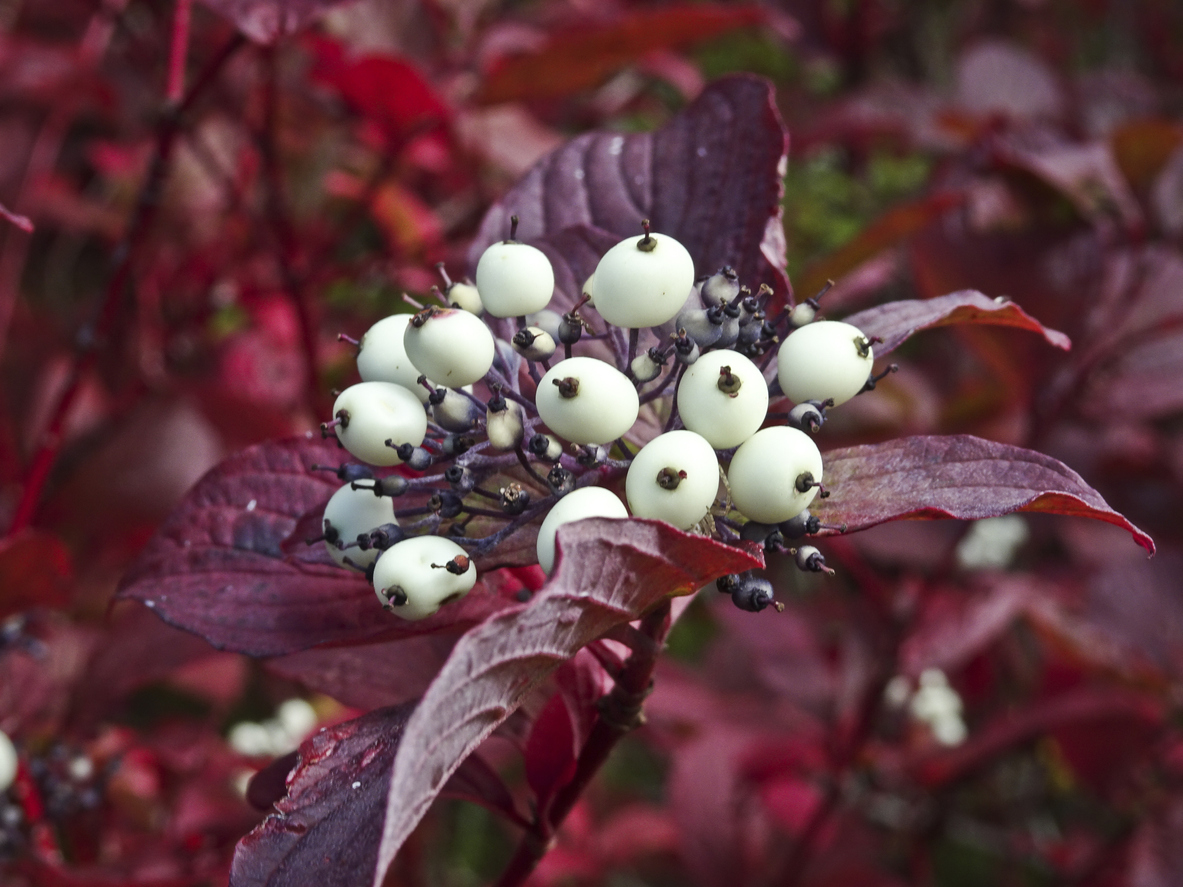
Growing from 5 to 9 feet tall, redtwig dogwood (C. sericea) produces clusters of small off-white flowers in spring. It is often selected for its showier leaves which change color in autumn to red, then fall to reveal even redder bare stems and branches that hold the color throughout winter, a nice contrast to white snow. Give this extremely hardy and fast-growing red-leaf plant moist soil and full sun to partial shade in the North, partial shade in theSouth.
USDA Plant Hardiness Zones: 2 to 7
Best For: Shrub border, rain garden, larval host
8. Red Chokeberry (Aronia arbutifolia)
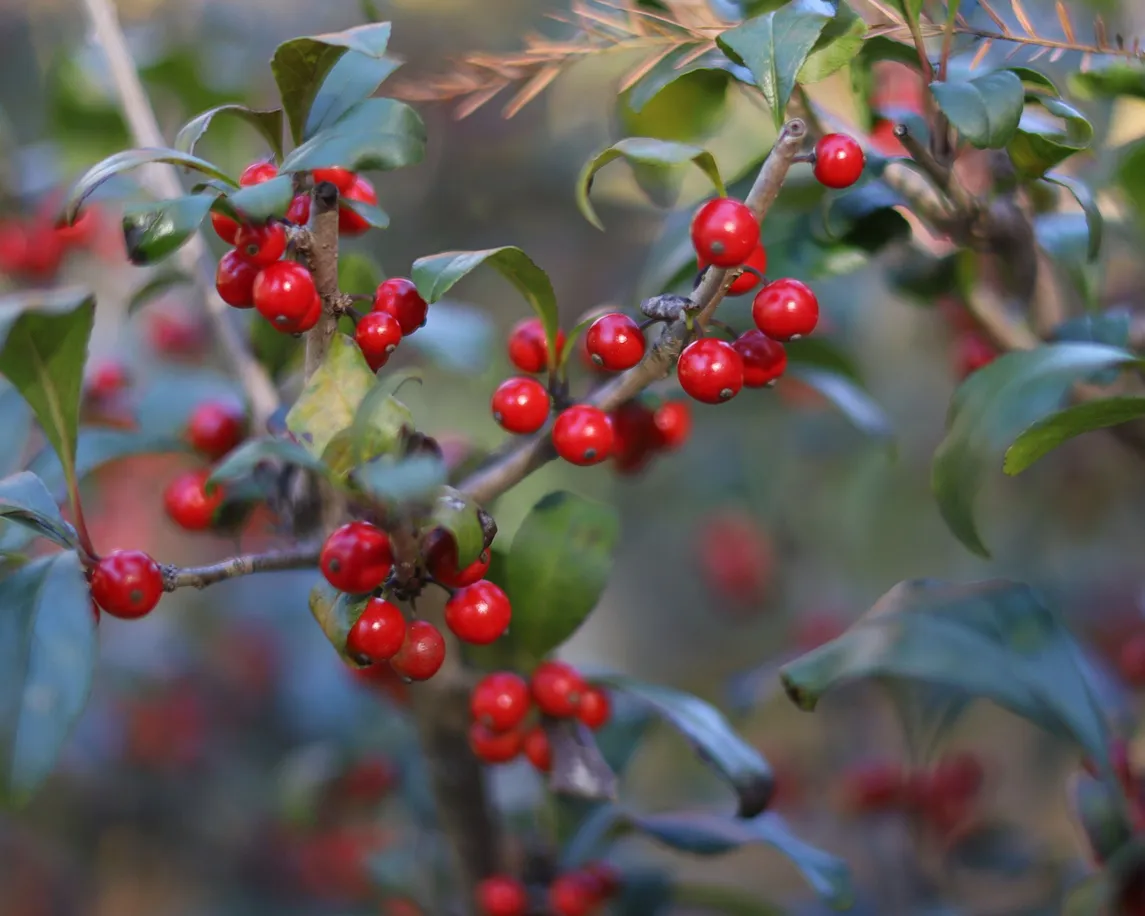
Also often grown for its red leaves in autumn, most brilliant in the cultivar Brilliantissima, this bush grows from 6 to 12 feet tall and isn’t picky about soil or sun. Its small white flowers in spring are followed by red berries during late summer and autumn. Although you may “choke” on the fruits’ extreme tartness, they make good jams and jellies due to their high pectin content.
USDA Plant Hardiness Zones: 3 to 9
Best For: Hedge, rain garden, screen
RELATED: 20 Evergreen Shrubs to Beautify Your Garden Year-Round
9. Rose (Rosa spp.)
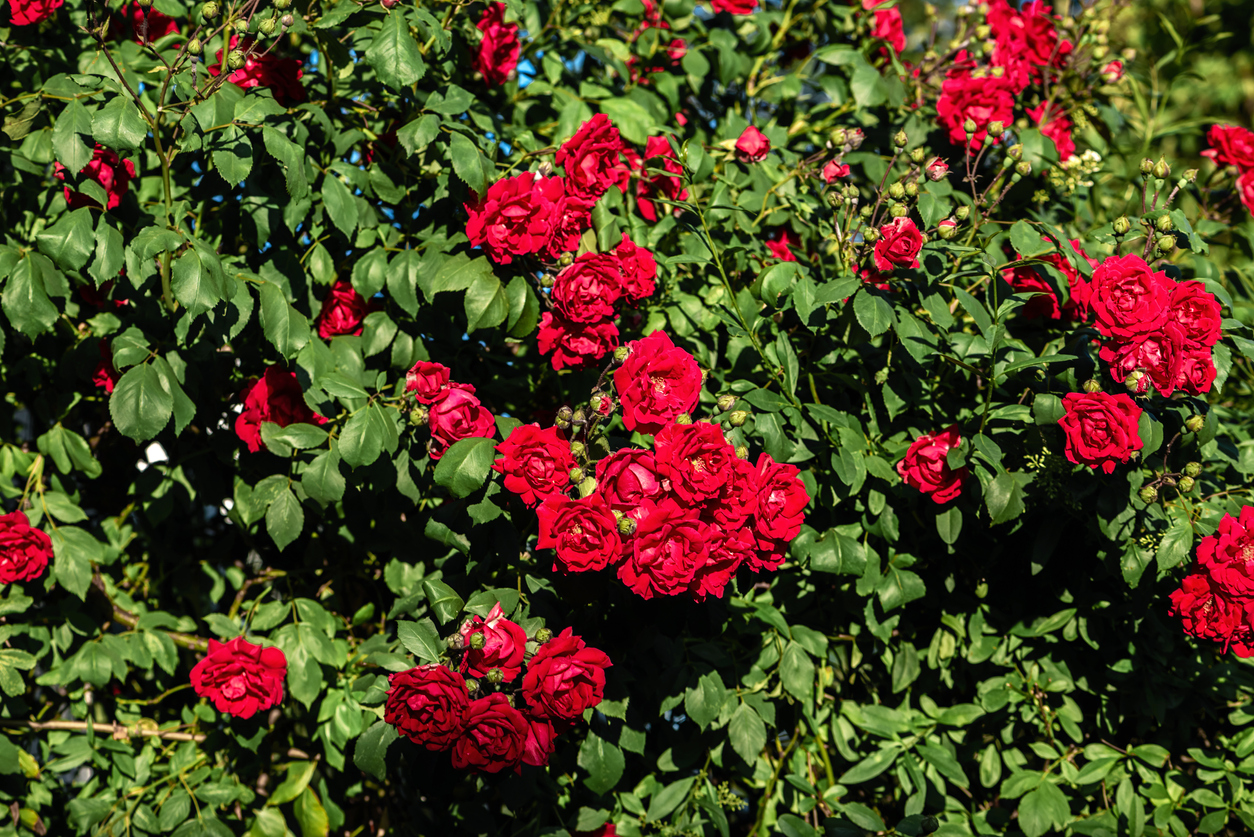
Red reportedly is the most popular color in roses, but the crimson color can vary from the bright scarlet of the popular climbing Blaze cultivar to the duskier dark red of the climber Don Juan. Roses perform best in full sun and well-draining soil. Keep in mind that garden-grown roses won’t have stems as long as specially pruned greenhouse-grown florist types. Still, they are summer stunners in the landscape with their red blooms.
USDA Plant Hardiness Zones: varies from 2 to 11
Best For: Container plant, specimen plant, climbing plant
10. Spice Bush (Calycanthus occidentalis)
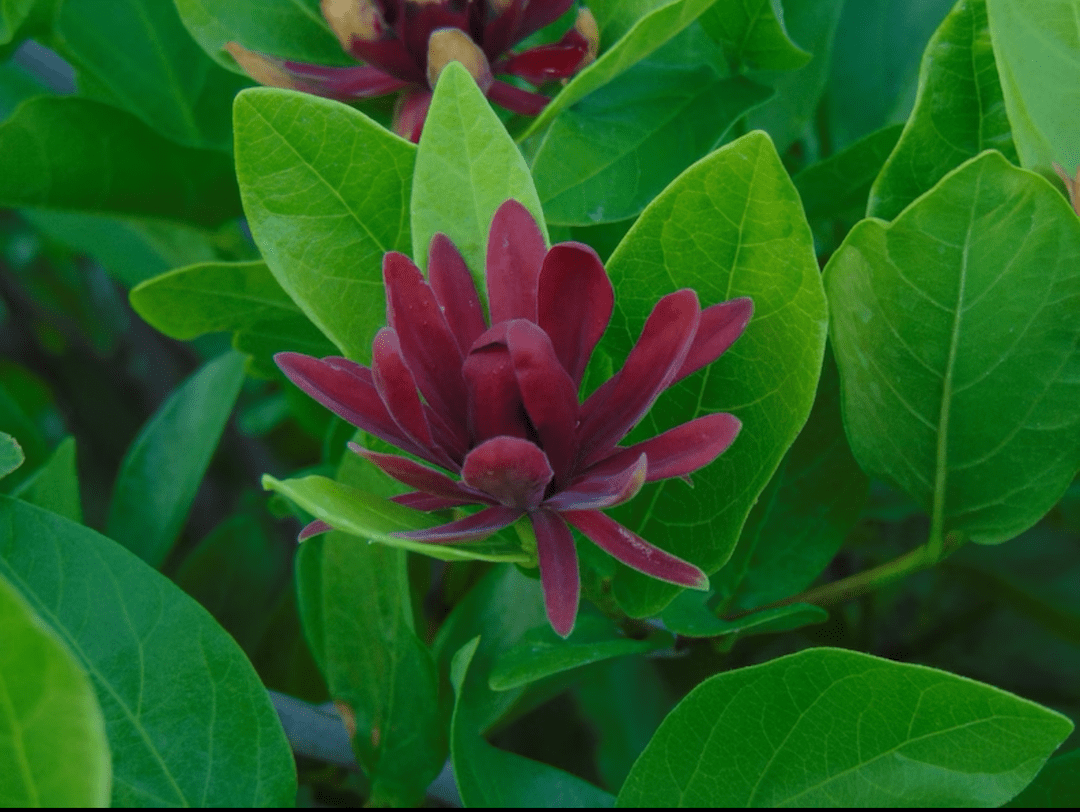
Native to California, spice bush, also called Californian Allspice, varies from 4 to 12 feet in height. It will spice up your garden by producing unusual 2- to 3-inch magnolia or brownish-red blooms with a wine-like scent in late spring and summer. However, spice bush can be toxic to both people and livestock. This shrub will grow in full sun or partial shade in moist loamy soil.
USDA Plant Hardiness Zones: 6 to 9
Best For: Shrub border, shade garden, woodland garden
RELATED: Add Color to Your Landscape by Planting These 13 Purple Shrubs
11. Tropical Hibiscus (Hibiscus rosa-sinensis)
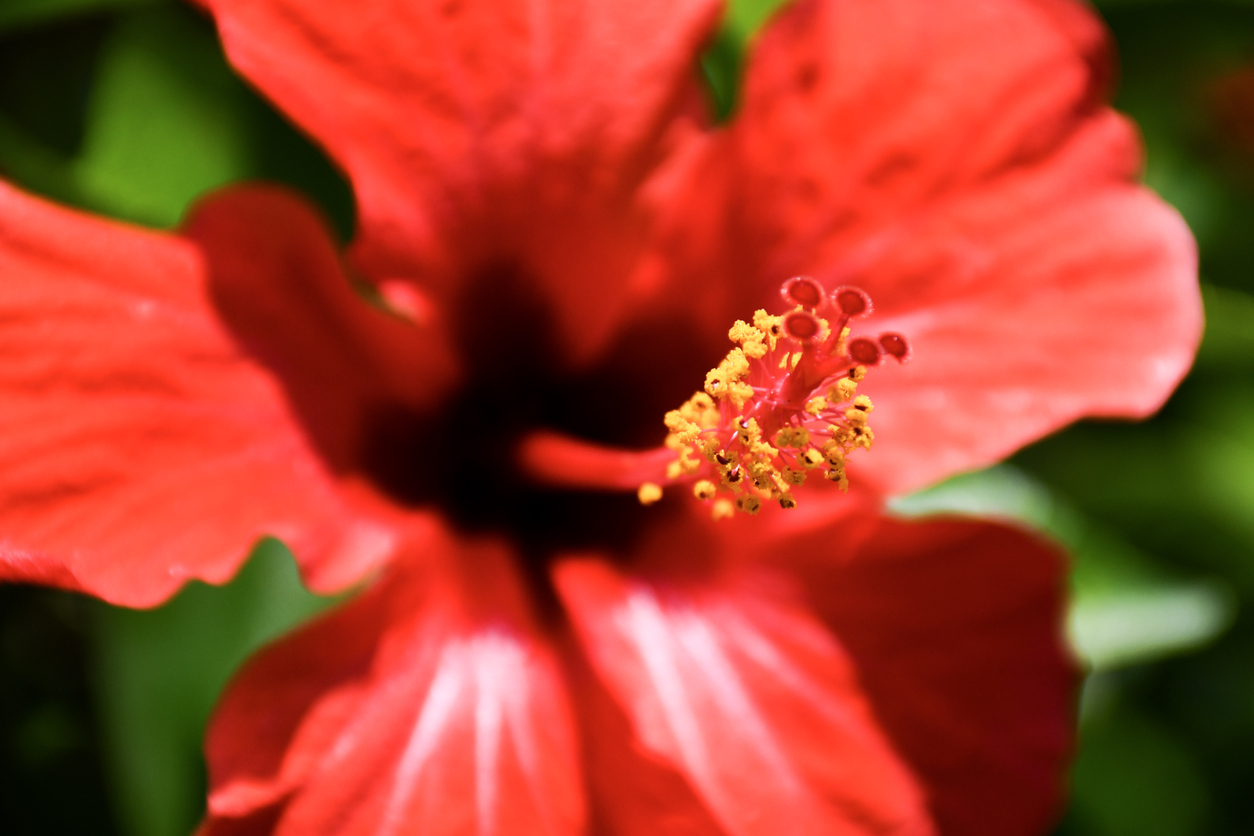
Red is one of the most popular colors among tropical hibiscus shrubs such as the single President’s Red and the double Red Dragon. Although tropical hibiscus shrubs typically grow to about 10 feet tall with flowers 4 to 8 inches across, they can soar even higher in Hawaii’s climate. They prefer full sun and moist but well-draining soil. In less than tropical climates, plant these bushes in containers and move them indoors over winter.
USDA Plant Hardiness Zones: 9 to 12
Best For: Container plant, hedge, screen
